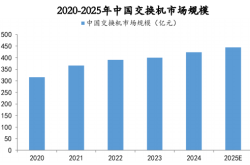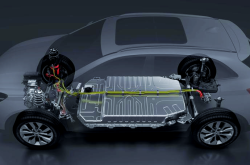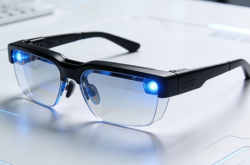Robot Competitions Dominate Screens: Unitree and Peers Vie for More Than Just Attention
![]() 06/06 2025
06/06 2025
![]() 473
473

Author|Xiang Xin
Soccer matches, marathons, and boxing bouts—this year, humanoid robots have not only been raising funds but have also been fiercely competing in sports arenas.
In March, Zhao Mingguo, co-founder of Accelerated Evolution, led the "Tsinghua Vulcan Team" to victory in the RoboCup German Open with a score of 9:0. 
Demonstration of Accelerated Evolution's T1 robot playing soccer.
In May, Unitree Technology, in partnership with CCTV, broadcast a robot fighting competition live. All four participating robots were Unitree Technology's G1. The robots engaged in punches and kicks on the field, providing the audience with much entertainment.
Interestingly, on the same day Unitree was set to broadcast its robot fighting competition, Zhongqing Robotics announced it would hold the world's first full-size humanoid robot free-fighting competition in December, followed by one every quarter.
Zhongqing provides multiple open-source humanoid robot bodies, allowing participating clubs to independently develop algorithms and upgrade hardware. 
On June 28, the RoBoLeague World Robot Soccer League will commence in Yizhuang, Beijing. The competition will use Accelerated Evolution's humanoid robot, Accelerated T1, as the standard platform and recruit participants nationwide.
Behind the excitement of these robot sports competitions lie simultaneous actions by technology companies in equity, branding, and the market. They must not only compete for attention and go viral but also pave the way for the next stage of funding, listing, and industrialization.
Unitree Technology has changed its name from "Hangzhou Unitree Technology Co., Ltd." to "Unitree Technology Co., Ltd." This name change can be seen as the completion of share reform, and the industry speculates that it intends to pave the way for an IPO listing.
After officially announcing that its humanoid robot is the official robot of the Robot Football League, Accelerated Evolution immediately announced the completion of its Series A funding round. The funds will be primarily used for product iteration and upgrade, as well as large-scale mass production and delivery.
However, amidst the hustle and bustle of competition, a question arises: Are robots punching and kicking in the arena a highlight display following technological breakthroughs, or a makeshift solution due to the current immaturity of commercial scenarios, leading to a passive shift to the performance stage?
Whether playing soccer or boxing, these competitive scenarios themselves do not yet have a clear commercialization path and are more often a window to "show off muscles".
Before real application scenarios have taken shape, enterprises choose to create momentum and gather attention through competitions. This is also a way to sustain the next stage of capital injection and ecosystem building. 
Competitions showcase the "hardware" advantages of robots.
Why have so many robot sports competitions suddenly emerged?
A sentence repeatedly mentioned by the host during the live broadcast of Unitree Technology's robot fighting competition has already summarized the essence of these competitions: laymen watch for excitement, while insiders watch for the know-how.
For the general public, who belong to the "laymen," robot fighting and soccer matches are stimulating and interesting, making for great after-dinner conversation.
When robots gain an advantage in the competition, they even mock the enemy by patting their butts. These dramatic scenes are more thrilling than watching robots dance. 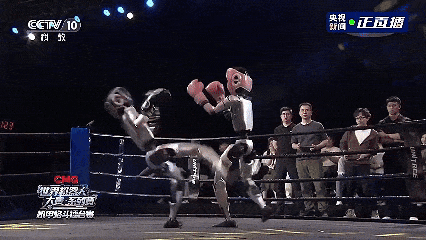
Companies like Unitree Technology can also expand their brand influence through various competitions, while continuing to maintain public attention on robot technology. This enhances people's cognitive understanding and emotional identification with robot technology, creating a friendly social atmosphere for robots to integrate into daily life.
For technical "insiders," they can observe the technical strength of these enterprise robots in three aspects: hardware, perception, and full-body dynamic control.
Demonstrating technical strength is conducive to enterprises continuing to attract developers and expand the developer ecosystem.
Zhongqing is organizing robot boxing competitions, while Accelerated Evolution is organizing robot soccer matches. Like Unitree, they are all vying for the attention of developers and shaping their robots as "platform-based hardware" images.
The choice of the fighting arena and soccer field is because it is a relatively controllable scenario that can also demonstrate the dynamic confrontation of robots.
Taking the robot fighting competition as an example: In boxing matches, robots need to withstand fierce hits, and their own movements will also generate huge reaction forces, as well as impacts from frequent falls. 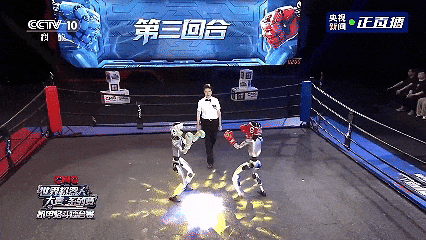
The flexibility, strength, and structural stability of the hardware system directly determine whether the robot can "survive" intense confrontations and continue to fight.
The participating G1 is about 130 cm tall and weighs about 35 kg, with 29 degrees of freedom and a joint torque of up to 120 Nm, supporting rapid explosive movements. Combined with bionic joints made of special materials and a lightweight design, it is both resistant to hits and flexible.
The data collected by the perception system is crucial for the robot to maintain balance, perform precise actions, and recover after falling.
In this competition, Unitree Technology's robots' perception can be divided into two categories:
Environmental perception: Achieved through 3D lidar and depth cameras for 360-degree detection and perception.
Self-posture perception: Monitored in real-time by IMU (Inertial Measurement Unit) and high-precision joint sensors.
In terms of full-body dynamic control, it is easily overlooked that although robots are manipulated by humans, they mainly rely on themselves to maintain balance after being impacted on the field. 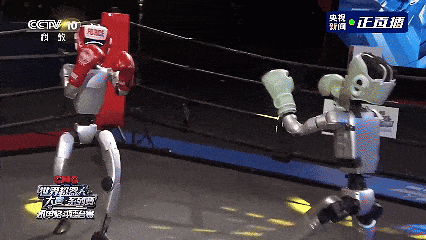
Liu Tai, deputy chief engineer of the China Academy of Information and Communications Technology (CAICT) Tel System Laboratory, introduced that humanoid robots are supported by a set of large models and motion control model algorithms, which are actually used for manipulation.
Unitree Technology's robots first undergo AI reinforcement learning in a simulation environment to optimize the control strategy of the robot's posture under various conditions such as imbalance.
During the competition, G1 processes a large amount of data from sensors through high-precision real-time algorithms, precisely coordinates multiple joints throughout the body, converts high-level commands from the operator into stable and powerful action execution, and optimizes the robot's impact resistance through specific dynamic balance compensation algorithms.
In simple terms, sports competitions such as fighting and soccer primarily test the robot's "muscles" and "reaction nerves".
Not long ago, a humanoid robot marathon was also held in Yizhuang, Beijing. 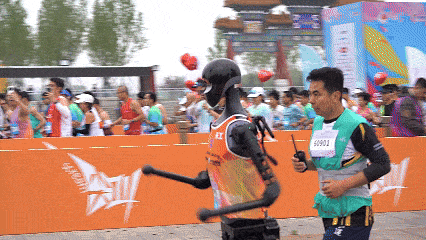
The difference is that the marathon places greater emphasis on the long-term stable operation of robots in complex and random environments.
However, fighting competitions and soccer matches test the robot's dynamic explosive power and impact resistance in fixed scenarios. 
Ontology enterprises compete for developers through competitions.
Although fighting competitions, soccer matches, and other events differ in format, their goals are highly consistent—they all aim to turn their humanoid robots into standardized, universal, and open robot platforms.
Throughout global technology history, similar competitive competitions are not uncommon in the early stages of technological development:
The DARPA Grand Challenge propelled autonomous driving technology from the lab to reality.
The RoboCup robot competition provides a test bed for multi-agent systems, path planning, and real-time perception.
Today, fighting competitions and soccer matches in the field of Chinese humanoid robots are also playing similar roles.
However, the biggest difference between these competitions at present is that they are no longer traditional arenas where various robots compete on the same field. Instead, enterprises provide unified robot hardware, and developers conduct algorithm development, action training, or manipulation competitions around these bodies.
Behind this lies the competition for the right to speak on technology platforms, attracting developers, and establishing a development ecosystem.
Similar to Windows in the PC field and Android in the mobile phone field, the field of humanoid robots may also give birth to standardized operating platforms and hardware interfaces in the future.
At a time when humanoid robots have not yet traversed the path of commercialization and landed, and To B orders are still in the pilot exploration stage, grasping research institutions, robot enthusiasts, and engineering teams first, attracting them to develop actions, upload data, and refine algorithms around their own robots is a practical strategy for enterprises to "survive".
The benefits of establishing a development ecosystem through competitions are obvious.
First, it can help enterprises iterate products at a lower cost.
Whether it's algorithm optimization, hardware adaptation, or sensor system adjustment, feedback from the developer community is much more efficient than internal autonomous optimization.
Secondly, the sports data generated by these competitions is also an important data source for training embodied intelligence large models.
Finally, and most importantly, once the number of developers on a certain platform reaches a certain scale, a "positive flywheel effect" will be formed—the more people use it, the more perfect the platform becomes, and the more perfect the platform becomes, the more people it will attract to join.
Of course, building a platform ecosystem is not easy.
To attract developers, it is first necessary to achieve standard unification, friendly interfaces, and reliable performance, which are huge challenges for the robot's ontology design, control system, and software architecture.
For now, only a few manufacturers can truly achieve software and hardware integration, standardized production, and a certain level of openness.
Even Unitree Technology, which achieved commercialization earlier than Zhongqing Robotics and Accelerated Evolution and has long-term technical accumulation in the industry, has been criticized by many developers. The biggest advantage of its products may be their affordability, but many components still have defects, the level of completion is not high, and the sophistication of products such as motors, robotic arms, and lidar only stays at the "maker level".
After purchasing Unitree Technology's joint motors, some developers found that they could not achieve consistent motor speed directly through the software interface, and there was no standard brake disc inside, which could not realize the basic function of rapid braking of joints in emergency situations, potentially leading to safety hazards in industrial scenarios. 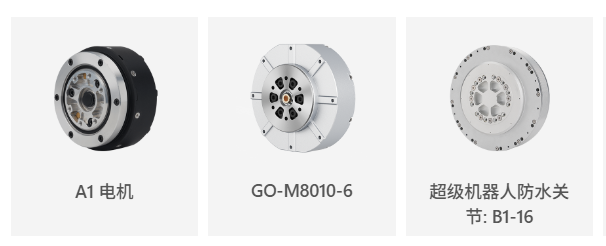
Three motors of Unitree Technology.
Secondly, the company must be able to provide developers with complete development materials and after-sales support.
Taking the leading enterprise Unitree Technology as an example.
Although its official open-source documents cover a relatively comprehensive range, including underlying hardware control, algorithm training, simulation deployment, etc., and also provide many key open-source materials such as the robot's SDK (Software Development Kit) and ROS (Robot Operating System), the content of the documentation is not detailed enough. For example, the motor code library only has one example without comments. 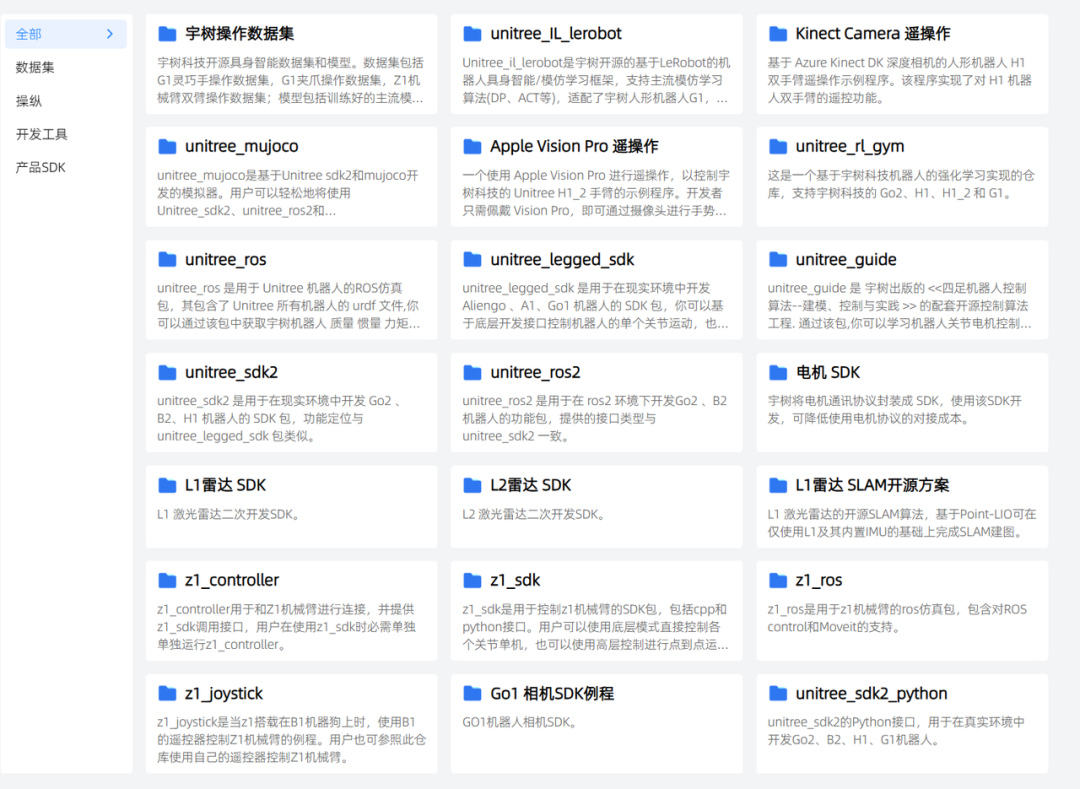
Official open-source documentation of Unitree Technology.
Some developers have also found that Unitree's official documentation development guide has not been updated in a timely manner. The reinforcement learning routine section in the development guide for the general humanoid robots G1, H1, and the quadruped robot Go2 is no longer applicable to the latest RL code, and there are errors in the PyTorch version and running script steps.
Ben Bolte, founder of the American humanoid robot company K-Scale, also found it difficult for American developers to contact Unitree Technology's support staff to help repair faulty hardware.
These deficiencies mean that the path to the platform is far from being truly opened up.
What is more noteworthy is that most of the developers attracted by the competitions focus on the levels of "algorithm optimization" and "action showmanship." Although they are highly active technologically, they may be detached from real task requirements. As a result, the ecosystem may not be able to be transformed into commercial application capabilities.
For instance, in developing combo skills for fighting competitions, developers might prioritize motion fluidity over energy consumption control, mechanism longevity, or operational precision—aspects crucial in real-world applications like factory manufacturing and outdoor inspections.
In essence, constructing an open platform and attracting developers is essential for embodied intelligence to achieve universality, but it's not the sole path. 
Entertainment events are by-products of the industry's nascent stage.
Robot sports competitions emerge naturally from a state of "technological rivalry with a lack of application scenarios".
Organizing competitions is visually captivating, breaks barriers, and demonstrates to capital and media that "robots can move". Additionally, it serves as an alternative when companies struggle to identify genuine customer needs.
If factory collaborations are absent, live fights attract at least some viewers.
However, this has sparked increasing doubts.
Zhu Xiaohu, Managing Partner at GSR Ventures, clearly stated that humanoid robots can perform acrobatics but face challenges in commercialization. Existing customers from universities and central enterprises struggle to create sustained value, and an ideal commercialization model remains elusive.
These remarks ignited considerable controversy, sparking endless debates among investors and founders of humanoid robot companies. Zhu Xiaohu directly addressed the core contradiction in humanoid robot commercialization.
Furthermore, most impressive athletic feats are achieved through pre-programming + remote control. The so-called "intelligence" relies heavily on real-time human intervention, far from true autonomous operation.
Wang He, founder of Galaxy General, once revealed that the humanoid robots dancing at the Spring Festival Gala were programmed, and the marathon runners were remote-controlled. Neither could operate independently. 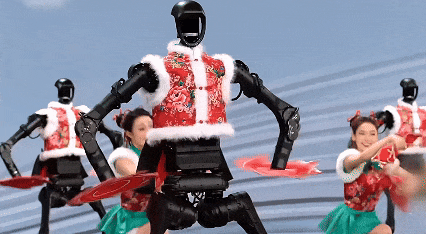
This explains the surge in entertaining competitions—they don't test robot brain intelligence, require no closed loops, and offer low costs with significant benefits for enterprises.
However, the success of the humanoid robot industry hinges not on defeating opponents but on enduring real-world tasks.
While robot sports competitions test robots' overall performance, they essentially represent a technological spillover.
After all, beyond commercial performances, few scenarios demand robots to box, perform acrobatics, or play football. These motion control technologies don't directly lead to application scenarios.
The true winners in humanoid robots aren't on the playing field but off it. They are companies that discover rigid demand scenarios and genuinely apply technology to those scenarios.
Whether focusing on sports or scenarios, two foreign companies exemplify failure and success, respectively.
Boston Dynamics, focused on sports, developed its hydraulic humanoid robot Atlas to perform backflips seven years ago, and its Spot robot dog went viral with a video of it opening a door with a mechanical arm, amassing 150 million views on YouTube alone.
However, due to a misguided technological route and high product costs, Boston Dynamics couldn't identify suitable commercialization scenarios, failing to convert popularity into sales. It changed hands multiple times, being sold by Google and SoftBank Group of Japan before being acquired by Hyundai Motor Group of South Korea.
The hydraulic Atlas was retired in 2024, and the quadruped robot dog market is now dominated by the emerging Unitree Robotics.
Despite occupying a market niche with its low-cost, high-performance products, Unitree Robotics faces the same challenges as Boston Dynamics—it hasn't found a practically applicable commercialization scenario. Its heavy reliance on the scientific research market hinders its escape from the "strong in technology, weak in application" dilemma.
Agility Robotics, focused on scenarios, is an American humanoid robot company. Its strategy is not to cast a wide net but to concentrate on logistics and warehousing scenarios.
Founded in 2015, Agility Robotics initially sold its robot products mainly to academic laboratories and research institutions.
In 2022, Agility Robotics reached a critical turning point in commercialization. The company completed a $150 million Series B funding round with Amazon's participation, enabling it to enter the warehousing ecosystem.
Since then, Agility Robotics has been testing its products in the logistics system, specializing in box-moving tasks, and achieving commendable commercialization results.
Agility Robotics has partnered with six major customers, including Amazon, GXO, and Schaeffler Group, five of which are giants in the logistics and warehousing industry.
Agility Robotics' robots provide services to these customers for a fee. Based on a foreign hourly wage of $30, purchasing their robots can pay for themselves within two years.
Currently, the Digit robots deployed by Agility Robotics in GXO's factories have facilitated the distribution of over 300,000 items. Agility Robotics has also been recognized by Time magazine as "the first company to make money with humanoid robots".
Agility Robotics' robots have set the Guinness World Record for the fastest 100-meter run by a bipedal robot, but they're not obsessed with enhancing athletic performance. Instead, by deeply exploring scenarios, they've forged a less glamorous but revenue-generating path.
However, it's crucial to note that while the business logic behind creating humanoid robots focused on cargo handling might work abroad, it may not necessarily succeed in China due to significant differences in labor cost structures and the automation foundation of logistics and warehousing scenarios.
Enterprises must select application scenarios aligned with local industrial characteristics, social demand structures, and cost-benefit models, exploring implementation possibilities in areas with labor shortages and highly non-standardized scenarios.
Currently, in terms of scenario focus, representative domestic enterprises include UBTech, Magic Atom, LEJU Robotics, and Kepler Humanoid Robotics.
Except for Kepler Robotics, which primarily targets industrial manufacturing and warehousing logistics, the other three companies concentrate on industrial manufacturing scenarios while also covering commercial and scientific research scenarios, striving to tap market demand from multiple angles and find the perfect fit between technology and scenarios.
For players in the humanoid robot industry, evolving robots from "able to fight and run" to "able to think and work" and identifying sustainable value anchors beyond laboratories and commercial performances may be the ultimate, more crucial competition.
Amidst the excitement, don't forget to return to the essence of technological innovation.
After all, technological advancement isn't about showcasing skills but about making the world witness the real potential of robots transforming our lives.



